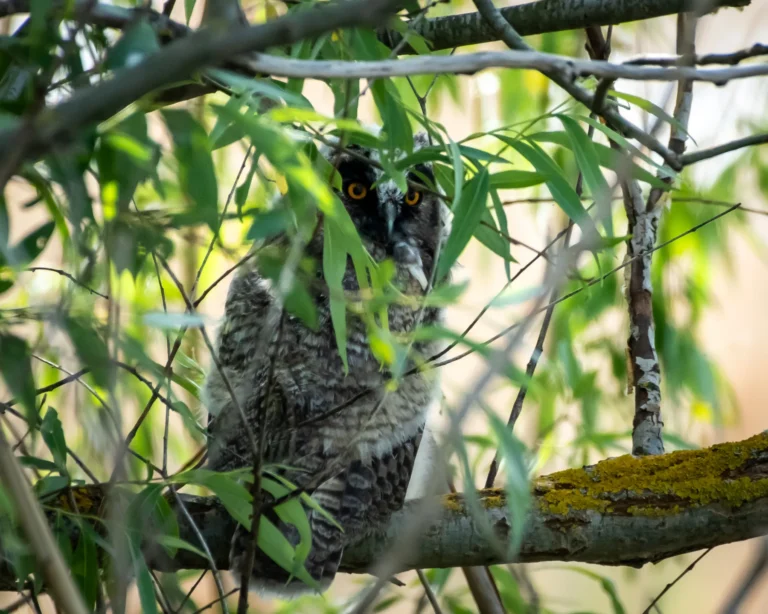
Eurasian eagle-owl

Description and how to observe Eurasian eagle-owl:
The Eurasian eagle-owl, also known as the Great Owl, is one of the most imposing owl species in the world, with a wingspan of up to 1.8 metres and a height of around 60-75 cm. It has dark brown feathers with shades of white and yellow, and its bright orange eyes make it easily recognisable. In the Danube Delta, the eagle owl can be seen mainly at dawn or dusk, when it is out hunting. Favourite places to spot them are wooded areas by the water, cliffs or even ruins, where they usually hide and spend the day in safety.
What it feeds on Eurasian eagle-owl:
The Eurasian eagle-owl is a top predator in its ecosystem, feeding on a wide variety of animals, from small mammals (mice, rabbits, squirrels) to birds, snakes and even fish. Its ability to hunt both at night and at dusk allows it to feed in conditions where other animals would have difficulty.
Threats:
Although the Eurasian eagle-owl is a resilient species, major threats to it include habitat loss, poaching and environmental pollution. Deforestation and human development significantly reduce its nesting ranges, and pesticide contamination of water and soil can lead to a decline in its prey population, affecting food availability.
Ecological role:
More information about Bubo bubo:
The Eurasian eagle-owl is a protected species in Romania, and in the Danube Delta it is a symbol of the richness and diversity of the local fauna. Observing and protecting this species helps to maintain and promote a special ecosystem, and the Danube Delta, with its diversity of habitats, is one of the few places in Europe where this magnificent bird can be found in the wild.
Discover now the most beautiful places in the Danube Delta!
In the following pages, you will find detailed information about:
- Top tourist destinations: Traditional villages, nature reserves, tourist trails and much more.
- Activities and attractions: Everything you need to know about boating, fishing, bird watching, cycling and other activities.
- Accommodation and catering: Accommodation to suit all budgets and restaurants serving traditional cuisine.




